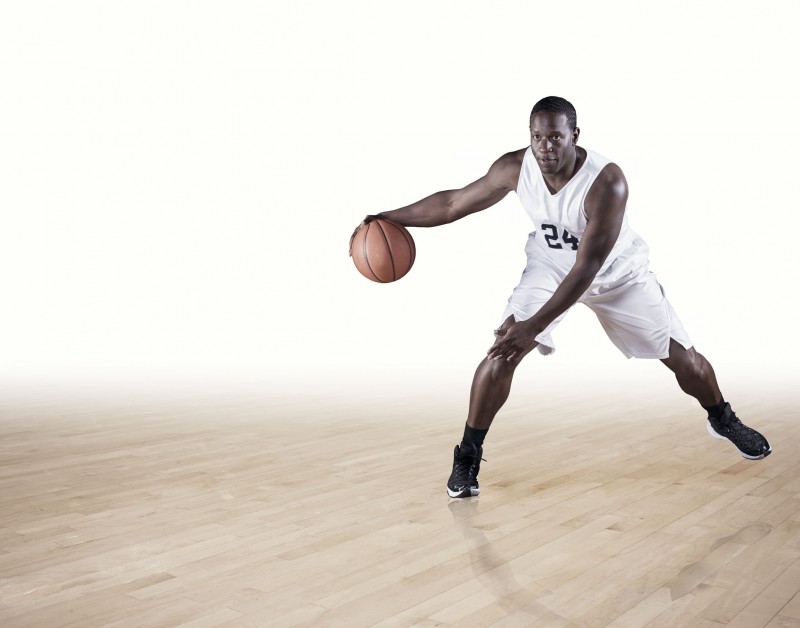
When it comes to the aerobic system, most people understand the basics. It is one of three pathways that assist in adenosine triphosphate (ATP) production, which fuels the human body and provides it with the necessary energy in order to meet specific demands. The aerobic system is the slowest part of the energy system that requires a lot of oxygen, but it is also the most efficient, which means it can be used for multiple hours. All the science aside, the aerobic system can simply dictate how conditioned an athlete is, which in return affects performance. We get it, but we have also only scratched the surface.
RELATED: The Truth About Energy Systems
When we think of aerobic athletes, we think of marathon runners, long-distance swimmers, and sometimes even a soccer player who runs the entire 90 minutes. Some people will even agree that basketball players and football players could benefit from a little aerobic training, but I would argue that every athlete needs it, no matter what sport he or she plays. The aerobic system goes way beyond how long an athlete can last or how far an athlete can run. The human body is very dynamic and it will find ways to utilize an aerobic foundation in and out of competition. Every athlete needs to develop an aerobic base somewhere within their training program in order to be in control of their nervous system and to promote better recovery.
Photo courtesy, yobro10 © 123RF.com
Autonomic Nervous System
The first reason all athletes need some sort of aerobic background is that it will allow them to be in better control of their nervous system. Our nervous system is mainly influenced by a sympathetic and parasympathetic state. Our sympathetic state is better known as “fight or flight” and this is very common during athletic competition and any other physical activity. In opposition, our parasympathetic state is known as “rest and digest”, which is beneficial for things like recovery, relaxation, and conserving energy during competition. Together, the sympathetic and parasympathetic nervous system work in unison to provide the body proper and efficient stimulation. Although the body does this naturally, it can still be influenced by aerobic training somewhere in the off-season programming. Athletes who have an aerobic base are able to control their heart rate and breathing patterns very efficiently, which is part of the reason why they have the ability to be well-conditioned.
So why is this so important for EVERY athlete? If an athlete can control certain physiological responses during competition, they will be more efficient for a longer period of time than a deconditioned athlete. For example, think about game situations like timeouts or a stoppage of play because of an injury. Those minutes of downtime are crucial for recovery, and if the athlete cannot quickly switch to a parasympathetic state then they will be wasting time and energy.
Another example would be an athlete that is trying to maintain composure during a pressure situation. Their hearts are pounding and everything is probably going a thousand miles per hour. Although this is happening, the athlete with a good aerobic base will have an easier time keeping their poise in order to be successful in that situation because they can slow their heart rate and breathing rate on command. Do you think a golfer needs this when they are trying to sink the winning putt on the 18th hole? Do you think a pitcher needs this in order to close out a tight game in the bottom of the ninth? Do you think a gymnast needs this in order to perform a flawless routine on the last event of the night? These are all situations where an athlete needs to be able to control their nervous system even though they are not participating in an aerobically-dominant sport.
Photo courtesy, warrengoldswain © 123RF.com
Recovery
The second reason why building an aerobic base is so important for every athlete is that it promotes efficient recovery. Being able to last an exhausting game is important, but being able to last an entire season is just as vital. Having a quality aerobic system will aid in the day-to-day recovery process in order to give the athlete the best opportunity to stay healthy throughout their season. This recovery process also includes the tissue quality of an athlete and the quality of sleep that they are getting on a daily basis. Aerobically dominant athletes tend to have tissue that is easily manipulated, which becomes very important for the sports medicine team when they need to perform any type of manual therapy. Understandably, muscle mass is different for every athlete in different sports, but there is definitely a positive side to aerobic training on tissue quality even for your big, masculine athletes like football and rugby players.
Sleep is also a huge factor in every athlete’s recovery process. Sleep is arguably the most important variable, along with nutrition, so if it is not done at a high quality the athlete will be losing out in the recovery process. The goal is to be in a complete parasympathetic state as we lay in bed at night, but as mentioned earlier, being able to switch from sympathetic to parasympathetic can be difficult without any aerobic foundation. In this fast-paced world, stimulants are all around us, including our television, phones, stress, and even an exciting event that happened six hours ago. If our body cannot shut these stimulants out and transition to a parasympathetic state, it will be difficult to get the quality sleep that is necessary. Even if you do fall asleep right away, becoming restless at night and waking up frequently are always factors that can be controlled with the proper aerobic base. To be in a true parasympathetic state, the body needs to have the ability to control its nervous system and it can only do that if an aerobic foundation is in place.
MORE: Regular Testing for Physical Improvement in Rugby
Training and conditioning are more than just getting into shape. It’s about developing specific energy systems in order to make the athlete robust and efficient. I am not saying that every athlete needs to run a five-minute mile, but I do think that every athlete needs to have some sort of aerobic training within their programs. Typically, aerobic training will be done throughout the early off-season even for sports like soccer and basketball, but the same can also be done with alactic athletes like baseball players and golfers in order to create a proper aerobic foundation.
Thinking of the aerobic system as more than just an athlete being conditioned is important, and being able to have an athlete buy-in to this can be very beneficial. Aerobic training does not have to be long, endurance runs. It can be incorporated in different plyometric routines, circuit training, and fun active recovery methods like hiking or swimming. Incorporating some of these methods into a training program is very important for athletes in every sport and they will be able to reap the benefits of recovery and neural system control.
Header image courtesy, Andrii IURLOV ©123RF.com
Ross Hasegawa is a current graduate assistant in the Athletic Performance Department at Lindenwood University. Previous to his position at Lindenwood University, Ross spent two years at the University of Portland as an athletic performance intern. Ross has only been in the industry since January 2013, starting with brief stints at Concordia University – Portland and Hawaii Optimum Performance. During his short career, he has also been able to earn a bachelor’s degree in exercise and sports science at Concordia University – Portland and is currently pursuing his master’s degree in Human Performance at Lindenwood University. For more on Ross, check out his website at https://www.rosshase.com/ and follow him on Twitter (@rosshase).











